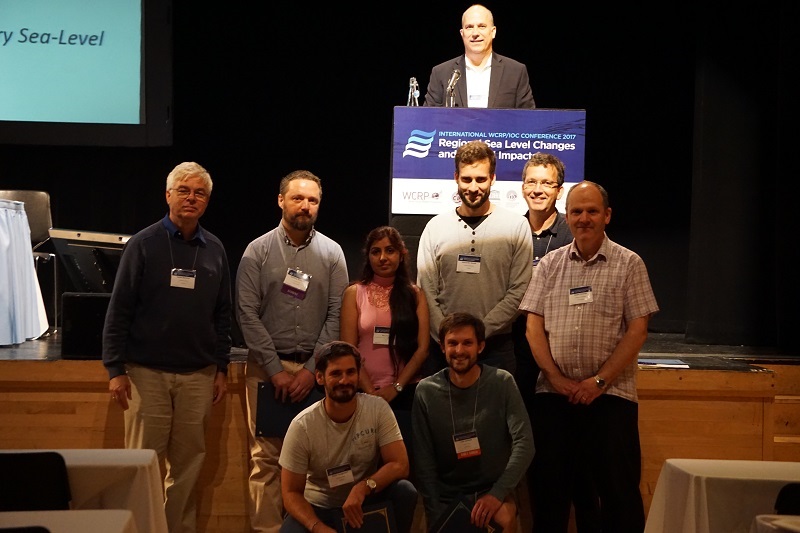2017 Sea Level Conference Highlights - Day 5

DAY 5 - CONFERENCE HIGHLIGHTS
Investing in the future of sea level rise: lessons, progress, and new ideas
On the fifth day, conference participants — filled with four days of fascinating, relevant, and timely discussions — were able to hear about the latest modeling efforts and different scenarios for the future. A panel of stakeholders also held a lively discussion on what they learned during the week and what their recommendations are for collaborative opportunities and research to support coastal management.
Getting communities together is a shared problem,” said David Behar, San Francisco Utilities Commission. It’s not just unique to the scientific community. One clear agreement among the panelists was that good communication is vital. Information that is better understand and more appropriate is then better used. Managers and scientists should be involved in the co-design and co-production of information for coastal policies; a one-way process doesn’t work. Furthermore, we should be using actionable data to enable tools, according to Kevin Horsburgh, National Oceanography Centre. The participants and panelists also discussed the role of the Paris Accord and how setting a target for temperature doesn’t take into account the ocean warming and resulting impact of sea level rise.
Some additional highlights from the day include:
- For the first time scientists will be able to understand global and regional spread in sea level projections from CMIP models used in IPCC assessments, through the Flux-Anomaly Forced Model Intercomparison Project (FAFMIP). (Jonathan Gregory, University of Reading)
- Society has committed to sea level on centennial timescales due to ice sheet response. Burning the remaining fossil fuel reserves has the potential to make Antarctica almost ice-free over multi-centennial timescales, and policy decision making today has implications on timescales from centuries to millennia. (Ricarda Winkelmann, Potsdam Institute for Climate Impact Research)
- Collaboration — across disciplines, communities, and even with data sharing — helps to not only advance the science but also the policies to manage and deal with sea level rise.
- Sea level change is going to disproportionately harm poor people and countries. We need to focus on leaving no one behind.
- Managers are interested in the whole story of the sea level continuum, from the low to high projections. There also needs to be a fundamental shift in thinking. If we only look at the problem starting with just the climate signal, then it leads down a different path than if we look at components of sea level rise that are important to decision-makers. (Kathleen White, US Army Corps of Engineers, and Jochen Hinkel, Global Climate Forum)
The conference organizers presented best poster awards to early career scientists and students. Congratulations to:
- Sönke Dangendorf, University of Siegen, Germany
- Andra Garner, Rutgers University, US
- Céline Grall, Columbia University, US
- Luke Jackson, Oxford University, UK
- Jessica Kenigson, University of Colorado, US
- Bradley Paul Lipovsky, Harvard University, US
- Alexander Nauels, University of Melbourne, Australia
- Meenu Rani, G.B. Pant Institute of Himalayan Environment & Development, India
- Geoffrey Richards, University of York, UK
A conference summary by the numbers
- 356 Participants
- 229 Poster presentations
- 111 Early career scientists and students
- 83 Competition posters
- 69 Speakers and panelists
- 46 Countries
- 11 Years since last WCRP sea level conference
- 6 Sessions
Follow along at #SeaLevel2017 and stay tuned for more conference daily highlights.














Add new comment